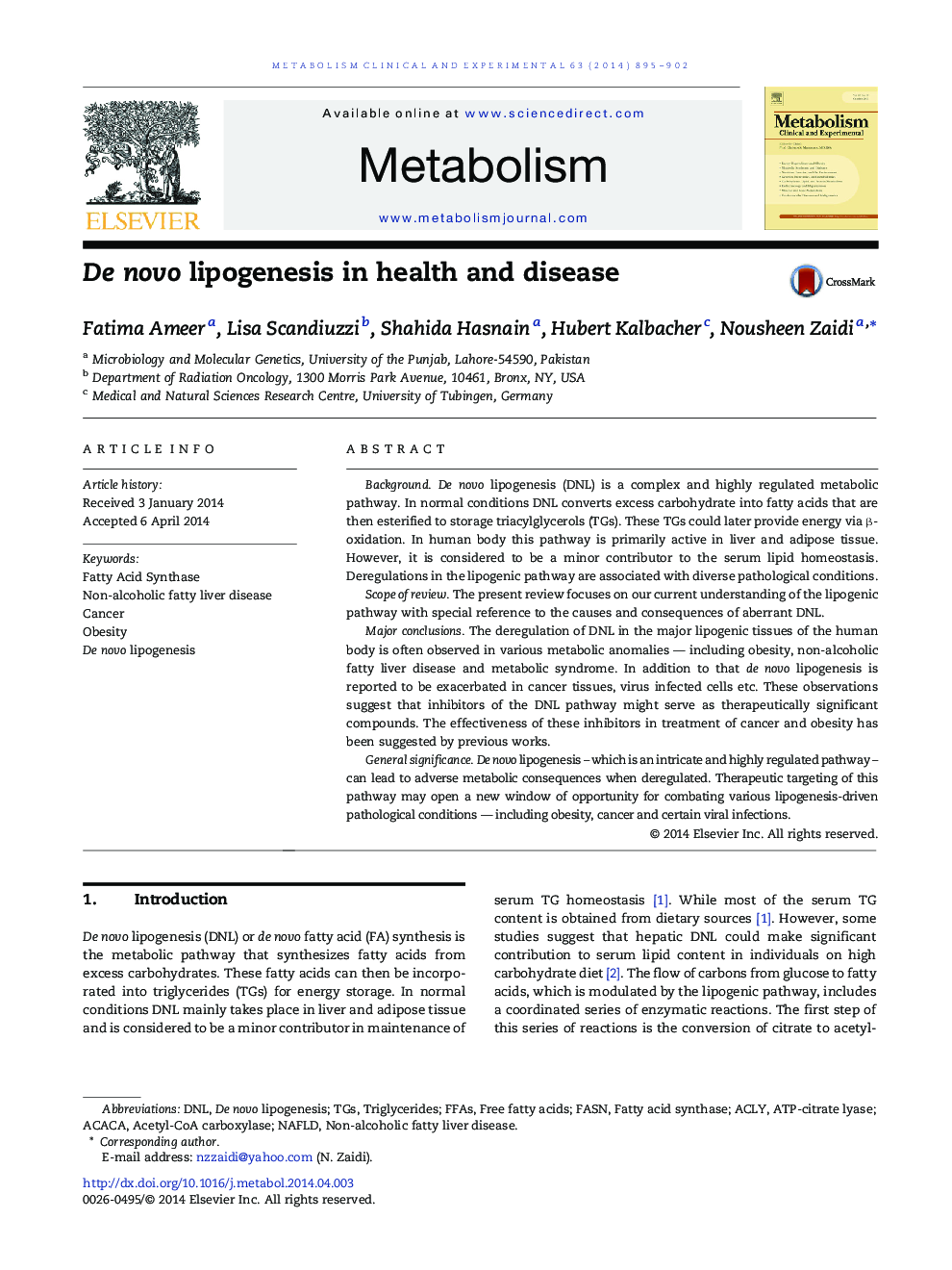| Article ID | Journal | Published Year | Pages | File Type |
|---|---|---|---|---|
| 2805502 | Metabolism | 2014 | 8 Pages |
BackgroundDe novo lipogenesis (DNL) is a complex and highly regulated metabolic pathway. In normal conditions DNL converts excess carbohydrate into fatty acids that are then esterified to storage triacylglycerols (TGs). These TGs could later provide energy via β-oxidation. In human body this pathway is primarily active in liver and adipose tissue. However, it is considered to be a minor contributor to the serum lipid homeostasis. Deregulations in the lipogenic pathway are associated with diverse pathological conditions.Scope of reviewThe present review focuses on our current understanding of the lipogenic pathway with special reference to the causes and consequences of aberrant DNL.Major conclusionsThe deregulation of DNL in the major lipogenic tissues of the human body is often observed in various metabolic anomalies — including obesity, non-alcoholic fatty liver disease and metabolic syndrome. In addition to that de novo lipogenesis is reported to be exacerbated in cancer tissues, virus infected cells etc. These observations suggest that inhibitors of the DNL pathway might serve as therapeutically significant compounds. The effectiveness of these inhibitors in treatment of cancer and obesity has been suggested by previous works.General significanceDe novo lipogenesis – which is an intricate and highly regulated pathway – can lead to adverse metabolic consequences when deregulated. Therapeutic targeting of this pathway may open a new window of opportunity for combating various lipogenesis-driven pathological conditions — including obesity, cancer and certain viral infections.
